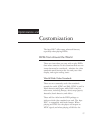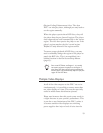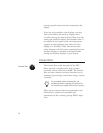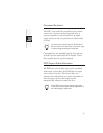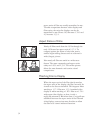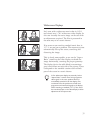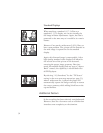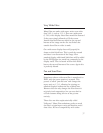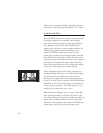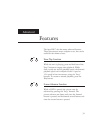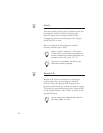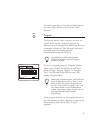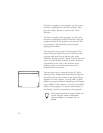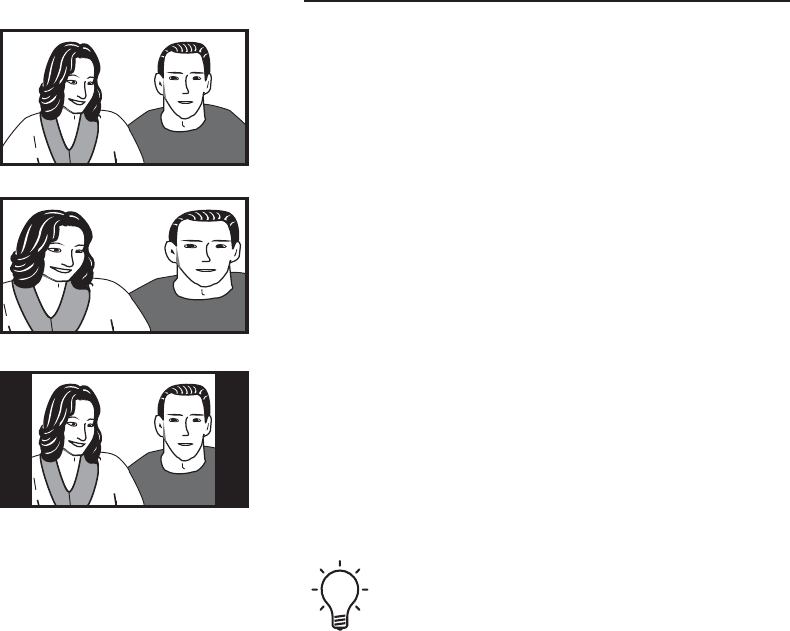
Widescreen Displays
Let’s start with a widescreen movie shot in 1.85:1
and viewed on a 1.78:1 widescreen video display. In
this case virtually the entire image can be seen with
no adjustments required. The film is presented in
the same way as in a movie theater.
If we want to now watch a standard movie shot in
1.37:1, we run into a problem. The narrower picture
automatically fills up the screen, stretching and
distorting the image.
This is clearly unacceptable, so we use the “Aspect
Ratio” control on the video display to shrink the
image horizontally, restoring the proper geometry.
The display device also adds black (or sometimes
grey) vertical bars on each side of the picture. These
correspond to the movable curtains used to block
part of the screen in a movie theater.
A few widescreen displays erroneously lack an
“Aspect Ratio” control when fed a progressive
video signal. In this case, standard films are
unavoidably stretched to fill the display. One
workaround for this problem is to feed both
progressive and interlaced signals to the display.
When watching a standard (1.37:1) film, select
the interlaced input on the video display to allow
adjustment of the aspect ratio.
35



